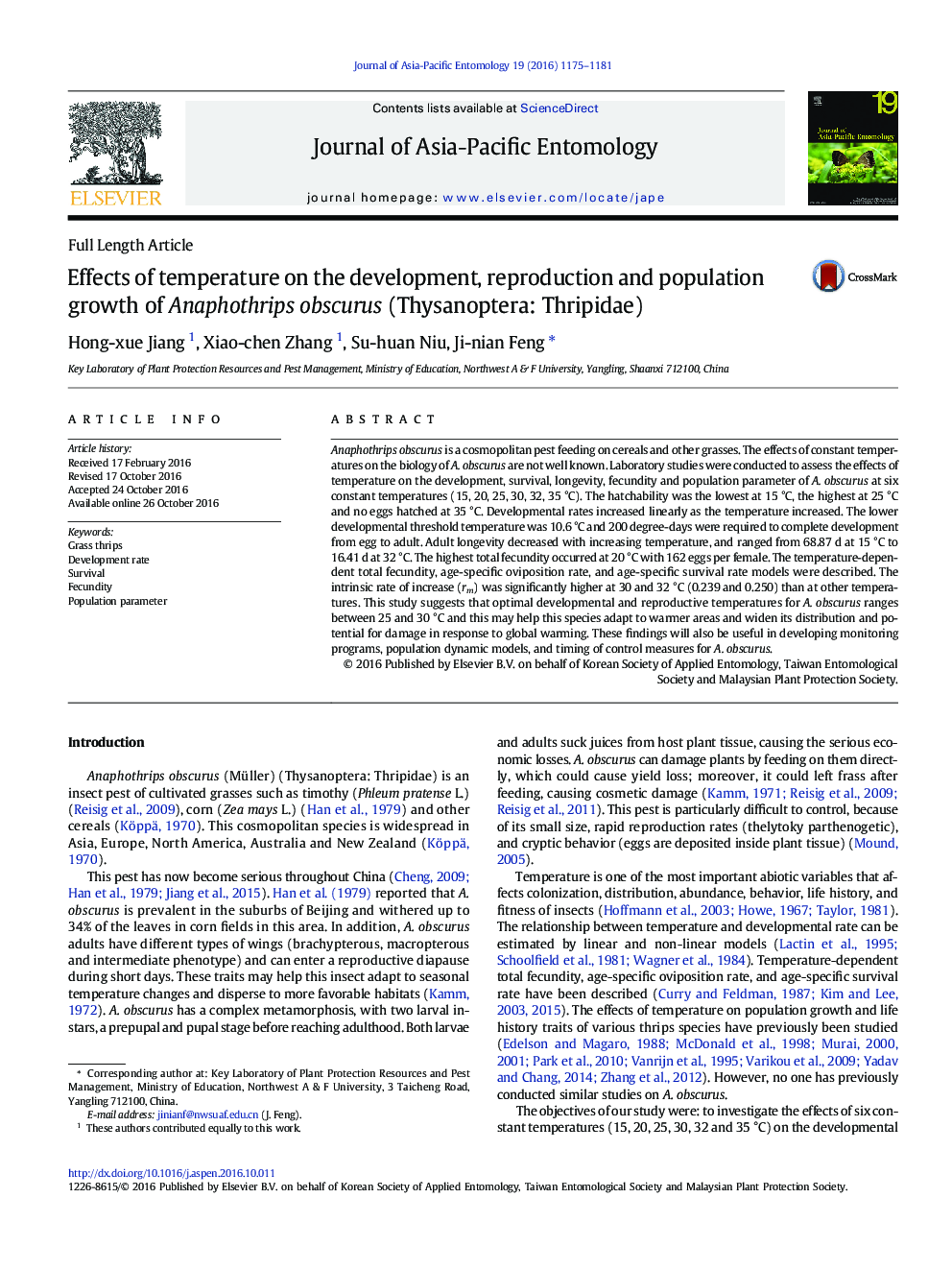| کد مقاله | کد نشریه | سال انتشار | مقاله انگلیسی | نسخه تمام متن |
|---|---|---|---|---|
| 4524355 | 1412976 | 2016 | 7 صفحه PDF | دانلود رایگان |

• Temperature is one of the most important abiotic factors affecting the life history and population dynamics of pests.
• Effect of temperature on the biology of Anaphothrips obscurus was estimated in the laboratory.
• This information would be useful in determining the optimum temperature.
• It is helpful to develop monitoring programs and control measures for Anaphothrips obscurus.
Anaphothrips obscurus is a cosmopolitan pest feeding on cereals and other grasses. The effects of constant temperatures on the biology of A. obscurus are not well known. Laboratory studies were conducted to assess the effects of temperature on the development, survival, longevity, fecundity and population parameter of A. obscurus at six constant temperatures (15, 20, 25, 30, 32, 35 °C). The hatchability was the lowest at 15 °C, the highest at 25 °C and no eggs hatched at 35 °C. Developmental rates increased linearly as the temperature increased. The lower developmental threshold temperature was 10.6 °C and 200 degree-days were required to complete development from egg to adult. Adult longevity decreased with increasing temperature, and ranged from 68.87 d at 15 °C to 16.41 d at 32 °C. The highest total fecundity occurred at 20 °C with 162 eggs per female. The temperature-dependent total fecundity, age-specific oviposition rate, and age-specific survival rate models were described. The intrinsic rate of increase (rm) was significantly higher at 30 and 32 °C (0.239 and 0.250) than at other temperatures. This study suggests that optimal developmental and reproductive temperatures for A. obscurus ranges between 25 and 30 °C and this may help this species adapt to warmer areas and widen its distribution and potential for damage in response to global warming. These findings will also be useful in developing monitoring programs, population dynamic models, and timing of control measures for A. obscurus.
Figure optionsDownload as PowerPoint slide
Journal: Journal of Asia-Pacific Entomology - Volume 19, Issue 4, December 2016, Pages 1175–1181